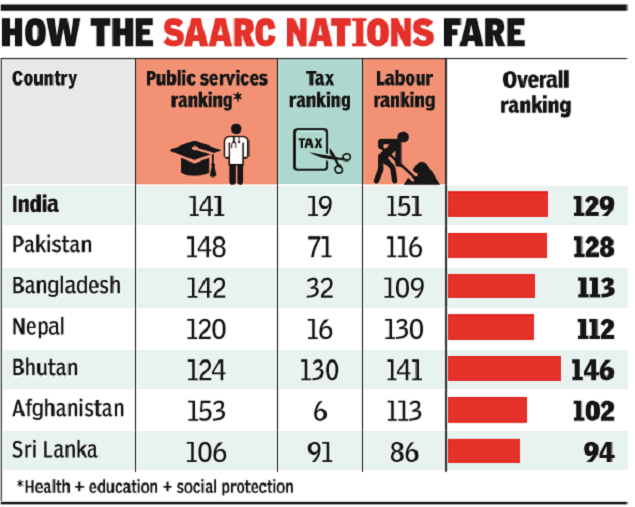
Globally, the report found, only 26 of the 158 countries surveyed were spending the recommended 15% of their budgets on health. “Nigeria, Bahrain and India, (the last of) currently experiencing the world’s fastest growing Covid-19 outbreak, were among the worst performing countries in the world in fighting inequality in the pandemic.” said the Oxfam statement. the Survey data show that India spent less than 4% of its budget on health and ranked 155th in the health spending index. “Its health budget is the fourth lowest in the world. Only half of its population has access to even the most essential health services, ”the report says.

According to the world Bank In the database, India was the 13th lowest (out of 206 for which data was available) in terms of the percentage of total public spending that went to health in 2017. It puts the figure for India at 3.4%. Burundi spent 8.5% of its total government budget on health in the same year. In perspective, the average for high-income countries was 18.6%, for lower-middle-income countries (the group to which India belongs) 5.1%. Japan spent 23.6% of the government budget on health.
The trend is consistent across South Asia: Pakistan spent just over 4% of its budget on health, Nepal and Bangladesh spent 5%, according to the Oxfam report. “This is particularly damaging when only half of India’s population (55%) has access to even the most essential services, and more than 70% of health spending is covered by family budgets (one of the highest levels in the world). world). This has left the country woefully ill-prepared to deal with the coronavirus pandemic, ”the report says.
For the economic consequences of the pandemic, India was even worse prepared. “India, which has weak labor rights and a high incidence of vulnerable employment (around 75%), is eighth from the bottom,” the report said. India and Haiti are the only countries outside of Africa in the bottom 10. In both Bangladesh and Pakistan, 57% of workers are vulnerable, which takes into account wages, rights and working conditions. In Nepal, it is a little higher than in India, at 79%.
“Most workers earn less than half the minimum wage; 71% do not have a written work contract and 54% do not receive paid leave. Only about 10% of the workforce in India is formal, with safe working conditions and social security, ”says the report.
.